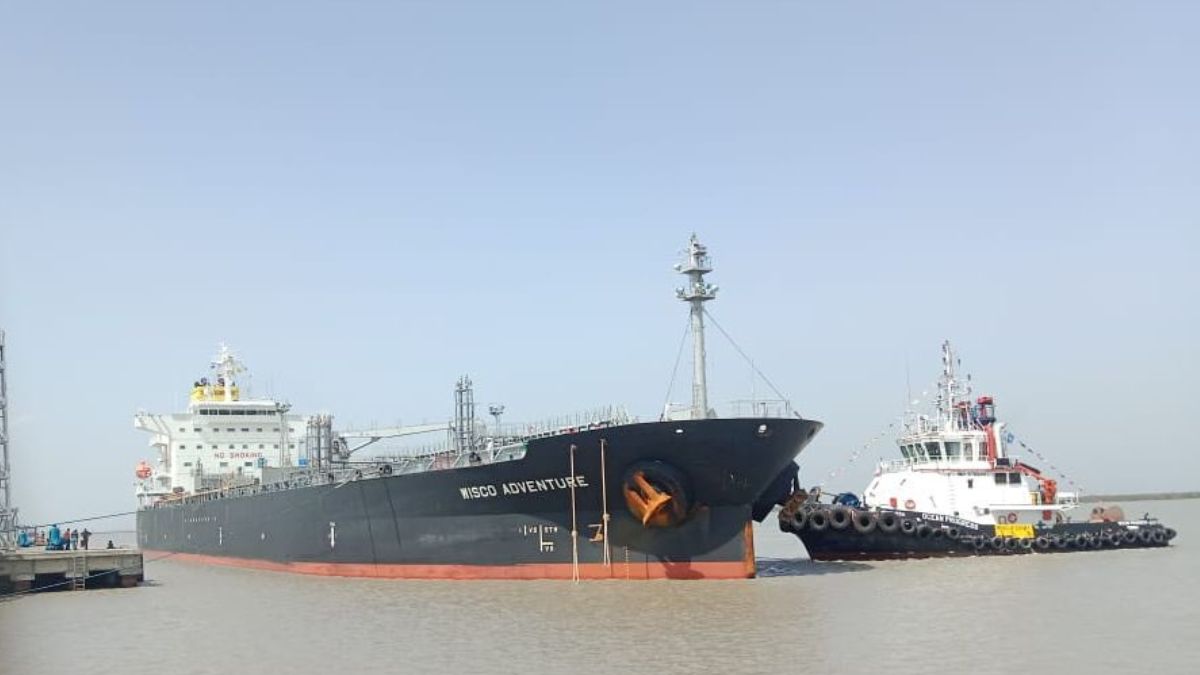Paradip, Deendayal ports emerge as key maritime trade hubs, cross 150 million tonne in cargo handled
 The Aframax-class M.T. Wisco Adventure vessel berthed at OJ-07 in Deendayal Port | X/ Deendayal Port Authority, Kandla
The Aframax-class M.T. Wisco Adventure vessel berthed at OJ-07 in Deendayal Port | X/ Deendayal Port Authority, Kandla
In a first for major ports in India, both Paradip Port in Odisha and Deendayal Port in Gujarat surpassed the 150 Million Tonne (MT) cargo handling mark in fiscal 2024-2025, as per an official statement by the Union Ministry of Ports, Shipping and Waterways on Tuesday.
Moreover, India’s major ports together saw a 4.3 per cent jump in cargo handling to 855MT in FY2024-2025. The nation has 12 major ports—all wholly owned by the Centre and governed under the Major Port Authorities Act of 2021.
They are the Mumbai Port, Chennai Port, Visakhapatnam Port, Cochin Port, New Mangalore Port, Syama Prasad Mookerjee Port, Jawaharlal Nehru Port, Mormugao Port, VO Chidambaranar Port, Kamarajar Port, Paradip Port, and Deendayal Port.
The net increase in traffic was attributed to higher container throughput, fertiliser cargo handling, POL cargo handling, and the handling of miscellaneous commodities, read the official statement.
From the last reported fiscal, container throughput rose by 10 per cent, fertiliser cargo handling by 13 per cent, POL (Petroleum, Oil, and Lubricants) cargo handling by 3 per cent, and miscellaneous commodities handling by 31 per cent.
“From record-breaking cargo handling to significant improvements in operational parameters and financial performance, the achievements of FY2024-2025 reflect the resilience and readiness of our ports to support India’s growing trade ambitions,” Union Minister of Ports, Shipping and Waterways Sarbananda Sonowal weighed in.
Sonowal also added that India was building “globally competitive, sustainable, and future-ready” ports that would “power India’s economic growth and global trade footprint in the years to come.”
In the reported fiscal, major Indian ports collectively handled 254.5MT of POL (including crude, petroleum products, and LPG/LNG), 193.5MT of container traffic, and 186.6MT of coal, along with other cargo such as iron ore, pellets, and fertilisers.
As India adds more ports in the future—like the international transhipment hub, the Vizhinjam International Seaport in Thiruvananthapuram, which was flagged off by Prime Minister Narendra Modi earlier in May 2025—the ministry looks to upgrade India’s major maritime ports with more investment in “mechanisation, process reengineering, port community systems, and multi-modal logistics integration.”
With these initiatives, the Centre looks to lift cargo volumes, reduce vessel wait times, optimise capacity utilisation, and increase investor confidence.
Maritime